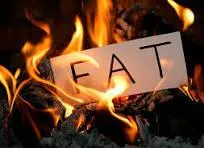
Fat Burning 101
Burn First, Burn All Day:
Unlocking Fat Loss with Glycogen Depletion and Smart Morning Movement
When it comes to losing body fat, most people think they need to spend hours in the gym, count every calorie, or follow some extreme diet. But for men and women in the 35–55 age group—many of whom are juggling careers, family, and endless responsibilities—time is the biggest barrier to getting healthy. Here’s the good news: You don’t need hours. You just need to be smart with your time, especially in the first 30 minutes of your day.
Let’s talk about glycogen, fat burning, and why a short burst of activity in the morning can help your body tap into fat stores more effectively for the rest of the day.
🔥 Glycogen: The Body’s First Fuel
Your body stores energy in two main forms: glycogen (stored carbohydrates in the muscles and liver) and fat (stored in adipose tissue). When you begin to move, especially during moderate-intensity exercise, your body burns muscle glycogen first. Think of glycogen as your body’s “ready-to-use” energy tank.
According to research and physiology texts, the body generally stores about 300–500 grams of glycogen, which is enough for about 20–30 minutes of moderate activity (Harvard Health, 2020; Berg, Tymoczko, & Stryer, Biochemistry, 7th ed).
Only after this glycogen store starts to empty does your body turn to its secondary fuel source: body fat.
This means:
✅ If you’re exercising to lose fat, you need to burn through glycogen first.
✅ The sooner you burn glycogen, the sooner your body taps into fat for fuel.
🌅 Why Morning Movement Matters
Now let’s apply this practically. When you move your body first thing in the morning, especially before eating, you’re working with naturally lower glycogen levels (since you’ve fasted overnight). That means your body will hit fat stores faster, especially if you start your day with a short burst of movement that lasts 20–30 minutes. Now not everyone can workout on an empty stomach, and that's ok. If this is you, have a protein shake (30gms of protein) prior to your workout. For women late 30's and older, fasted cardio/workouts can cause elevated cortisol (stress hormone) which causes inflammation and defeating the purpose of the workout. A perfect example of this is below. 👇👇
This concept is reinforced in Tim Ferriss’s book, The 4-Hour Body, where he mentions a method known as the 30-30-30 Rule:
Within 30 minutes of waking up:
✅ Eat 30 grams of protein
✅ Move for 30 minutes
Ferriss explains that this combo (especially the movement piece) primes your metabolism, increases insulin sensitivity, and helps you burn more fat throughout the day.
🏃 What This Looks Like in a Daily/Weekly Program
You don’t need a fancy gym. You don’t need hours. Here's a simple breakdown of how someone age 35–55 can work this into their weekly routine:
Daily Routine (Morning)
6:30 AM – Wake Up
6:45 AM – 20–30 Minutes Movement
Try:
✅ Brisk walking
✅ Bodyweight circuit (squats, pushups, lunges)
✅ Light cardio (bike, elliptical, jump rope)7:15 AM – Protein-Rich Breakfast
Examples:
✅ Eggs + turkey sausage
✅ Protein smoothie
✅ Greek yogurt + nuts
This quick combo depletes glycogen, spikes your metabolism, and keeps you fuller longer.
Weekly Example Plan
Day Morning Movement (20–30 mins) Evening (Optional) Monday Bodyweight Circuit Stretch or walk Tuesday Brisk Walk Rest Wednesday HIIT Intervals (Bike or Run) Optional Core Work Thursday Yoga or Mobility + Walk Rest Friday Bodyweight Strength Optional Walk Saturday Hike or Outdoor Activity Enjoy Life! Sunday Rest or Light Walk Meal Prep / Recovery
💡 Pro Tips for Maximum Fat Loss
Consistency beats intensity. You don’t have to kill yourself every morning—just show up and move your body.
Combine movement with protein. Following the 30-30-30 method supports muscle maintenance and blood sugar control.
Stay hydrated. Water is essential for fat metabolism. Drink a glass right when you wake up.
Sleep matters. Poor sleep messes with hunger hormones and recovery. Aim for 7–9 hours.
👥 Real Talk for Busy People
If you're in your 30s, 40s, or 50s, it’s likely your schedule is tight. But the science supports this: Just 20–30 minutes a day, especially first thing in the morning, can make a real difference in your fat loss journey.
You're not too late. You’re not too busy. You just need a strategy that fits your life—not someone else’s.
📚 References:
Ferriss, T. (The 4-Hour Body). Crown Publishing Group.
Harvard Health Publishing. (2020). The science of metabolism and fat loss.
Berg, J. M., Tymoczko, J. L., & Stryer, L. (2010). Biochemistry (7th ed.).
🔚 Final Thoughts
Fat loss isn’t about starving or overtraining. It’s about understanding how your body works and using that to your advantage. By starting your day with movement, depleting your glycogen stores, and pairing that with smart eating—you can train your body to burn fat more efficiently all day long.
Simple, sustainable, and science-backed.